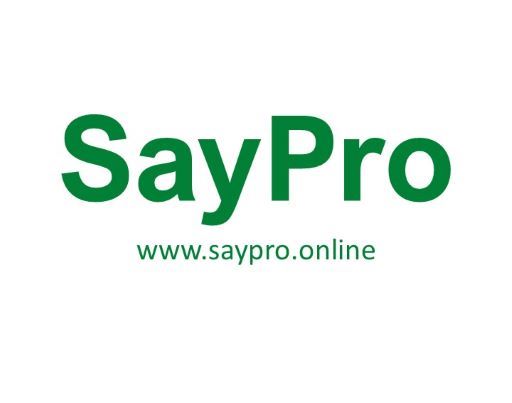Your cart is currently empty!
Tag: Intergrations
SayPro is a Global Solutions Provider working with Individuals, Governments, Corporate Businesses, Municipalities, International Institutions. SayPro works across various Industries, Sectors providing wide range of solutions.
Email: info@saypro.online Call/WhatsApp: Use Chat Button 👇

-

SayPro What are the necessary integrations to connect the LMS with other educational tools and software?
1. Content Libraries
Integrating content libraries into your LMS can greatly enhance the variety and quality of learning materials available to students. Here’s how:
- Off-the-Shelf Content: Platforms like LinkedIn Learning, Coursera, or Udemy offer ready-made courses on various subjects. By integrating these platforms, learners can access a wide range of courses directly through your LMS.
- Custom Content Creation: Tools like Articulate 360 or Adobe Captivate can be integrated to allow for the creation of custom courses tailored to your specific needs. These tools often offer interactive and multimedia-rich content, which can be directly uploaded to your LMS.
2. Communication Platforms
Effective communication tools can significantly enhance collaboration and interaction:
- Video Conferencing: Integrate Zoom, Microsoft Teams, or Google Meet to facilitate live virtual classes and meetings. This integration typically allows you to schedule and join meetings directly from the LMS, record sessions, and manage attendance.
- Messaging and Forums: Platforms like Slack, Microsoft Teams, or built-in discussion forums can be integrated to provide real-time communication and collaboration. These tools enable students and instructors to discuss course materials, share resources, and engage in group projects.
3. Analytics Tools
To measure the effectiveness of learning programs and make data-driven decisions:
- Learning Analytics: Tools like xAPI (Experience API) or Tin Can API can track detailed learner activities and interactions within the LMS. This data can then be analyzed to understand how learners engage with the content and identify areas for improvement.
- Data Visualization: Integrating with data visualization platforms like Tableau or Power BI allows you to create interactive dashboards and visual reports. This helps in tracking key performance indicators (KPIs) and making informed decisions based on learner progress and outcomes.
4. Human Resource Management Systems (HRMS)
For organizations that use LMS for employee training:
- Employee Training Records: Integrating with HRMS such as Workday or SAP SuccessFactors ensures that training records are automatically updated in the employee’s profile. This helps in tracking mandatory training, certifications, and compliance requirements.
- Performance Management: Integration with performance management tools aligns training programs with employee performance goals. This can help in identifying skill gaps and recommending relevant training to employees.
5. Single Sign-On (SSO)
Simplifying access and improving security:
- SSO Integration: Implementing SSO with identity providers like Okta or Azure Active Directory allows users to log in to the LMS using their existing credentials from other systems. This reduces the need for multiple passwords and enhances user experience.
6. eCommerce Platforms
Streamlining the purchasing and enrollment process:
- Payment Gateways: Integrating payment processors like PayPal, Stripe, or Square enables secure and seamless payment transactions for paid courses. This can include one-time payments, subscriptions, or installment plans.
- Course Catalogs: Syncing your LMS with an eCommerce platform like WooCommerce or Shopify allows you to display course offerings on your website. Users can browse courses, add them to their cart, and complete the purchase, after which they are automatically enrolled in the LMS.
These integrations can make your LMS more versatile, user-friendly, and efficient, ultimately enhancing the learning experience.